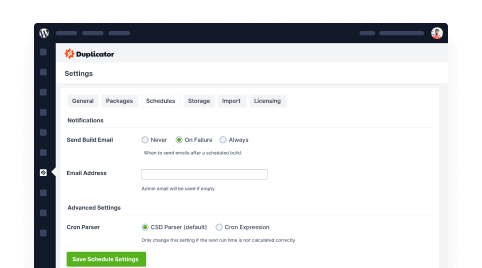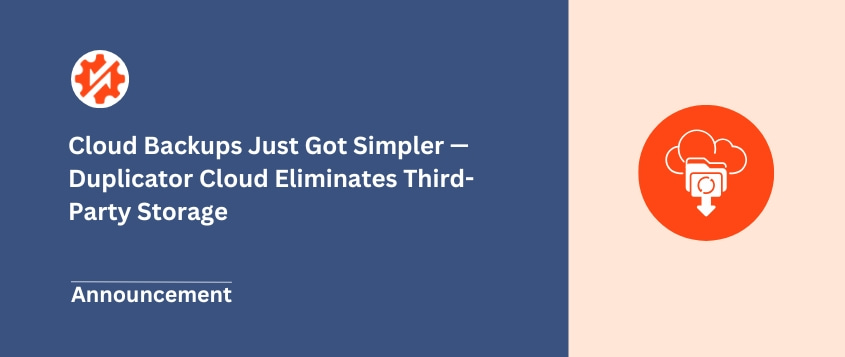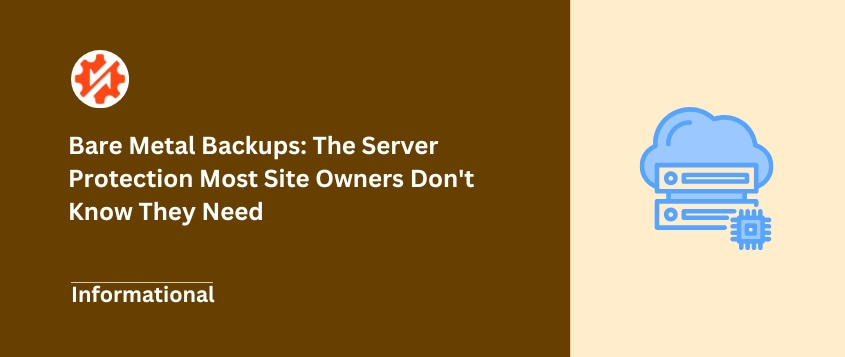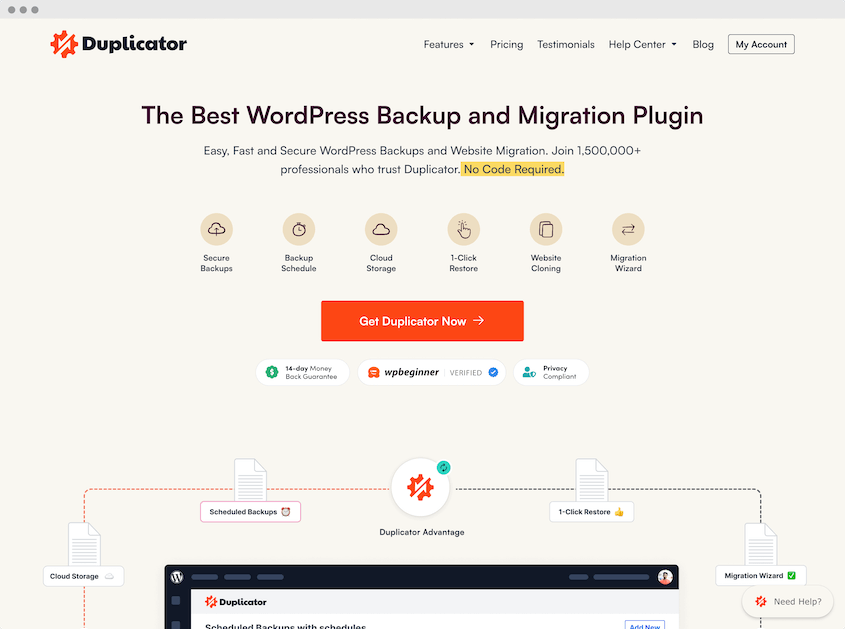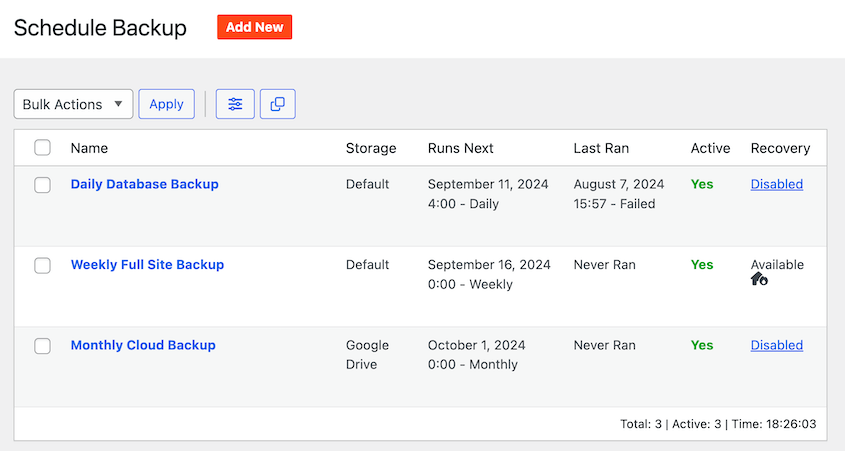Your server just died. Not a soft crash or a temporary glitch—completely dead.
This is every website owner’s nightmare scenario. Your WordPress site, customer data, and years of content are sitting on hardware that’s now about as useful as a paperweight.
But what if I told you there’s a type of backup that could bring your entire server back from the dead?
Bare metal backups give you a perfect clone of your server in digital storage, ready to spring into action when disaster strikes.
In this post, I’ll explain what bare metal backups are, how they work, and how to implement them.
You’ll learn:
- What bare metal backups are and how they work
- The technical process behind bare metal recovery
- How bare metal backups differ from file-based WordPress backups (and why you need both)
- Whether you can set up bare metal backups yourself or if your hosting provider should handle them
- How to build a two-layer protection strategy that covers both server-level and site-level disasters
- When to use bare metal recovery vs. WordPress backup plugins for different types of problems
Table of Contents
A bare metal backup is an exact clone of your entire server. This includes:
- The operating system (Linux, Windows, or whatever your server runs)
- All system configurations and settings
- Every installed application and service
- Device drivers and system files
- Your WordPress site and all other data
Think of it as taking a perfect photograph of your server’s hard drive, down to every single bit of data. This backup creates a digital twin of your entire machine.
The “bare metal” part comes from what happens during recovery. You can take this backup and apply it to completely new hardware — just the bare metal components with no software installed.
Boot up that empty machine with the right recovery tools, and you can put your backup onto it. When it reboots, you’ll have an identical copy of your original server. This process is called Bare Metal Recovery (BMR).
Your backup software takes a block-level snapshot of your server’s hard disk. Instead of copying individual files one by one, it reads every sector of the drive (including used and unused space) and creates a single massive file called a disk image.
This isn’t like copying your photos to a USB drive. It’s essentially creating a bit-for-bit duplicate of the entire storage device, preserving everything from system boot records to temporary files.
When disaster strikes and you need to recover, here’s what happens:
- Your hosting provider (or IT team) gets new hardware ready
- They boot the new machine using a special recovery environment
- The recovery tool “pours” your disk image onto the new hard drives
- The system reboots, and your server is back exactly as it was
The whole process can take anywhere from 30 minutes to several hours, depending on how much data needs to be restored and how fast the storage systems are.
Bare metal backups operate at the server level. They’re designed for catastrophic scenarios—when your hosting provider calls to tell you the physical machine has failed beyond repair.
Your hosting company typically manages these backups as part of their disaster recovery plan. When they restore a bare metal backup, they’re essentially rebuilding your entire server from scratch.
File-based backups (like what backup plugins create) work at the application level. They focus on your WordPress installation—your themes, plugins, uploads, and database.
These backups handle the problems you face as a site owner: plugin conflicts, malware infections, accidental deletions, or site migrations. You control these backups directly.
If your server’s motherboard fries, you need a bare metal backup. If a plugin update breaks your site, you need a file-based backup.
You can’t substitute one for the other. They protect against completely different types of failures.
Like any technology, bare metal backups come with trade-offs you should understand.
Pros of Bare Metal Backups:
- Complete recovery speed: Everything comes back in one operation
- Nothing gets missed: System configurations, applications, and data are all preserved
- Reduces human error during recovery: No need to remember which settings to configure
- Works even when the operating system is completely corrupted
Cons of Bare Metal Backups:
- Massive file sizes: These backups can be hundreds of gigabytes or more
- No granular recovery: Pulling out a single file or folder is difficult
- Hardware dependency: Restoring to significantly different hardware can cause problems
- If malware infected your server before the backup, you’ll restore the infection too
This type of backup is almost always a service provided by your hosting company, especially if you’re on a VPS or dedicated server. They have the infrastructure, specialized software, and expertise to create and manage these system-level backups properly.
Your job is simpler—ask the right questions. When you’re choosing a hosting provider or reviewing your current setup, ask them directly:
“What’s your disaster recovery plan if my server’s hardware fails completely?”
A good host will explain their bare metal backup schedule (daily, weekly, etc.) and their recovery process. They should be able to tell you how quickly they can get you back online after a catastrophic failure.
This backup acts as your final safety net. It protects you from the one scenario that’s completely outside your control: when the physical hardware your site runs on dies.
Professional website protection isn’t about choosing between backup types—it’s about using both strategically.
Layer 1: Your Host’s Bare Metal Backup
This protects the server itself. If hardware fails, your hosting provider can restore your entire machine from this backup. It’s their responsibility to maintain and execute this level of protection.
Layer 2: Your File-Level Backup
Backups protect your WordPress site from the problems you actually face day-to-day. Plugin conflicts, theme issues, accidental deletions, and malware infections are site-level issues that require site-level solutions.
Let’s say you update a plugin and it crashes your site with a white screen of death. A bare metal backup won’t help here—the server is fine, but your WordPress installation is broken.
This is when you need a backup plugin like Duplicator to restore your site to its previous working state.
Duplicator can automatically back up your website every hour, day, week, or month. You can send these backups to the cloud and restore them in one click.
But flip the scenario: your server’s hard drive fails completely. Duplicator can’t fix that because there’s no working server to restore to.
That’s when your host’s bare metal backup becomes important. They rebuild the entire server, then you’re back in business.
The professional approach? Use both layers. Let your host handle the server-level disasters while you maintain control over your site-level protection.
Frequently Asked Questions (FAQs)
How do you do a bare metal recovery?
You don’t—your hosting provider does it for you. When you need a bare metal recovery, you open a support ticket with your host, and they handle the technical process of setting up new hardware and restoring your server image.
What’s the best bare metal backup software?
The best bare metal backup software is whatever your hosting provider uses and manages properly. Professional tools like Veeam, Acronis, and StorageCraft are common choices, but the software matters less than the expertise behind it.
What’s the difference between system state and bare metal backup?
System state backups only capture the operating system files and configurations. Bare metal backups capture everything—OS, applications, data, the works.
Why is it called bare metal?
We call them bare metal backups because you can restore them to a machine that has nothing but the bare metal hardware—no operating system, no software, nothing. You’re literally starting with an empty computer and bringing it back to life with your backup.
What’s the difference between bare metal and cloud?
They describe different parts of backup systems. “Bare metal” describes the type of backup (complete server image), while “cloud” describes where the backup is stored (off-site cloud storage).
Can I get just one file back from a bare metal backup?
Technically yes, but it’s clunky and time-consuming. If you need to restore individual files or folders regularly, a file-based backup system like Duplicator is much more practical.
Do I still need a WordPress backup plugin if my host provides bare metal backups?
Yes. Bare metal backups protect against server-level disasters, while WordPress backup plugins protect against site-level problems that happen far more often. Plus, bare metal recovery means downtime measured in hours, while restoring from Duplicator takes minutes.
Secure Your Server, Secure Your Business
A complete backup strategy is about building layers of protection that work together.
Bare metal backups handle the nightmare scenarios where your server’s hardware fails completely. They’re your hosting provider’s responsibility and your final safety net against catastrophic server loss.
But day-to-day website disasters require day-to-day solutions. Plugin updates gone wrong, malware infections, or accidental deletions are site-level problems. To avoid them, you need site-level backups that you control directly.
This two-layer approach gives you real peace of mind. Your host protects the server, you protect the site, and your business stays secure no matter what type of disaster strikes.
Ready to take control of your WordPress backups? Duplicator Pro protects your site with automated scheduled backups, cloud storage, and one-click restores that work in minutes.
While your host handles server-level disasters, Duplicator handles everything else—and those “everything else” problems happen a lot more often. Get Duplicator Pro and complete your backup strategy today!
While you’re here, I think you’ll like these hand-picked resources:
Joella is a writer with years of experience in WordPress. At Duplicator, she specializes in site maintenance — from basic backups to large-scale migrations. Her ultimate goal is to make sure your WordPress website is safe and ready for growth.

